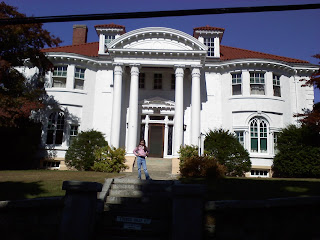
Along with Squire Andrew R. Giddinge and James Goff, Squire Edward Little is considered one of the three significant leaders during the the period immediately proceeding the organization of the town of Auburn in 1842. Edward Little's home is unquestionably, the most historic home in Auburn. Built in 1826 for Auburn's most beneficent founder, philanthropist, and educator, Squire Little, a lawyer, was one of the driving forces in the development of the Great Falls community. Edward Littles grandfather, Col. Moses Little, a revolution war veteran, was one of the first settlers to the area in the late 1700's. He laid claim to portions of land that at the time was referred to as the Pejepscot claim. Edward Little's father Josiah Little, a lawyer, represented many of the proprietors that incorporated the land into the town of Danville in 1818. Josiah managed and purchased much of the land until his death in 1830. In 1830 Edward Little, a Dartmouth College graduate, inherited the land from his father. Squire Edward Little was a generous man who made numerous public benefactions. One such gift was the creation of the Lewiston Falls Academy in 1834. The Academy, later named Edward Little in 1866, gave the city its first high school originally located at the intersection of Main and Academy Streets. The school was rebuilt in the late 1960's in the western prom section of town. To this day the high school still bears his name. Edward Little, who passed in 1849, was a quiet scholarly man who was always looking out for the best interest of the town. Over the years Edward Little's home has served many purposes since passing out of the Little family. It was recently restored to its original Federal Style elegance and is now home to an accounting firm.










